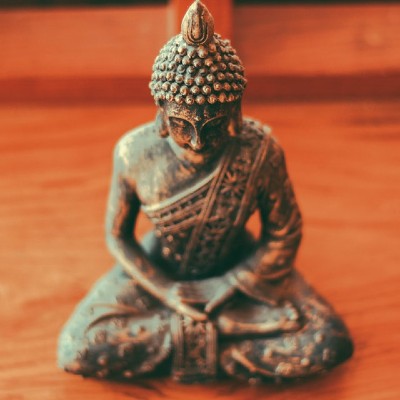
Most of us come to a meditation practice out of a longing to free ourselves from the repeated experience of being caught in familiar, often painful, emotional experiences within ourselves or in our relationships. We may meditate for hours, days, even years, become more and more aware of these difficult patterns and increasingly long to be free of them. But, at some point, it may seem like we’ve hit a wall, where sitting in individual meditation practice just doesn’t seem enough to penetrate through these more difficult blind spots. We may reach a stage where it’s hard to really see and recognize what’s happening by just continuing to sit with it.
The Enneagram is a tool that can help when we encounter these more difficult blind spots. It provides a larger perspective that helps us to see and understand typical patterns in our experience and the ways that we, and others like us, get stuck again and again in variations on the same theme.
The Enneagram (pronounced any-a-gram) brings to light nine archetypal personality types or patterns that profoundly condition and inhibit our development from our earliest infancy. Unlike other typologies based on our likes and dislikes or behavior or preferences, our Enneagram type reveals the particular core way that our personality – the root of our karmic conditioning – began and how it continues to limit us. It thus reveals the particular ways we can transform that conditioning at its root and begin to employ specific antidotes that liberate our deeper essential “Buddha” nature.
For example, the Enneagram Type Nine, often referred to as the Mediator or Peacemaker type, often experiences powerful, though largely unconscious, discomfort when faced with conflict. To avoid this intense discomfort they may unconsciously “go invisible,” bending over backwards to please others at the expense of their own unrecognized needs. Or they may automatically numb out through addictions, from alcohol or drug use to watching too much TV, overeating, or constant daydreaming. A traditional solo meditation practice might repeatedly reveal the non-confrontational or addictive behavior. But only understanding and seeing that one’s Type Nine conflict avoidance is at the root of this can lead to developing the capacity to tolerate and address conflict, assert one’s legitimate needs, and become more fully present.
For Type Six, often referred to as the Loyal Skeptic or the Devil’s Advocate, the core pattern is different. A Type Six feels a chronic sense of worry, a sense that the there is danger everywhere. Because of this, Sixes become hypervigilant in order to see the possible dangers or pitfalls in advance and therefore be prepared. This hypervigilance always seems obvious to the Six, but is actually an endless unconscious pattern of suffering, as there are always new potential problems requiring the Six to remain vigilant constantly. Meditation practice may eventually reveal the pattern of constant worry and hypervigilance. But freedom from this suffering can only come from understanding and seeing the root cause of the Type 6’s hypervigilant behavior: one’s undeveloped faith in one’s own inner capacity for wisdom and insight.
Each particular type’s behavior and outlook seems obvious and coherent, to them, and yet for each it is a particular blind spot and a trap, preventing them from truly being fully present and living from their deepest potential in each moment. As we come to see our type, see the ways we habitually get caught in our particular unconscious protective stance, we come to recognize the nature of our stuck position and have the opportunity to come back into presence. The Enneagram then becomes a map guiding us back home to our essential nature and its deeper capacities. When we can see these more invisible patterns as patterns, as emotional reactivity that occurs habitually, often just below our conscious awareness, we can bring them into consciousness. We can see the way that they imprison us.
There are many excellent books and websites on the Enneagram. One excellent basic introduction is The Essential Enneagram by David Daniels. For a more in-depth exploration we recommend The Enneagram of Passions and Virtues by Sandra Maitri.
In our upcoming IMCW course, The Mindful Enneagram, starting in January, we will be exploring in depth how to understand and use the Enneagram.


